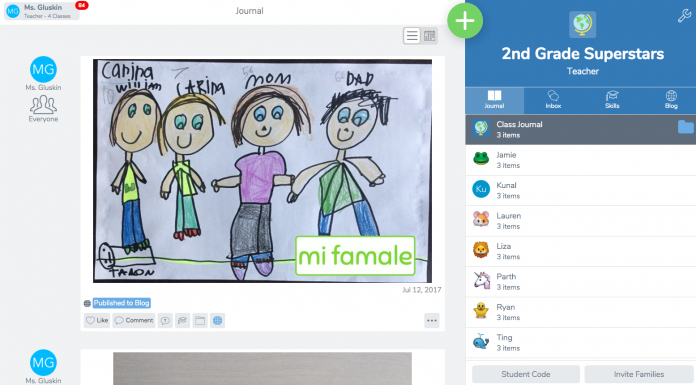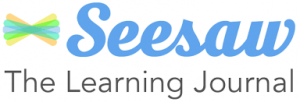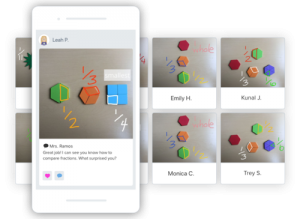
An app that helps parents and catechists stay in touch
SARA JONCKHEERE
In 2017 the Archbishop of Detroit, Most Reverend Allen H. Vigneron, issued his pastoral letter, Unleash the Gospel. Our parish church took to heart his message about parents being the primary educators of their children in the faith and making catechesis family-based. Our church created a program with a flipped catechesis model. Instead of students coming to an after-school class once a week (though that was still offered), they would be taught at home each week by their parents. Then, once a month they would come to class and be taught by catechists, while their parents went to their own faith formation given by one of the priests at our church.
For me, this was a change in mindset; I was used to teaching weekly and having most of the responsibility for what the students were learning fall to me. I struggled initially with how we catechists could really get to know our students and form a connection with them if we only met once a month. How would we keep in touch with the parents and help them stay on track with the lessons so they didn’t fall behind and get overwhelmed? To solve these problems, my class was chosen to pilot some technology in a nontraditional way.
 We used an app called Seesaw. This is a digital portfolio available on all digital platforms. In the Seesaw app, students can upload photos, videos, drawings, pictures from their camera, notes, links, and other documents to share their learning. In a traditional classroom setting that has access to devices, students use Seesaw throughout the day to upload and showcase their work. Teachers and parents can log in to see what students have posted. My plan was to flip that around and have the parents and students log in together from home to share what they were working on during the weeks we weren’t meeting. We hoped this would help us get to know the students better and allow us to see evidence of their learning.
We used an app called Seesaw. This is a digital portfolio available on all digital platforms. In the Seesaw app, students can upload photos, videos, drawings, pictures from their camera, notes, links, and other documents to share their learning. In a traditional classroom setting that has access to devices, students use Seesaw throughout the day to upload and showcase their work. Teachers and parents can log in to see what students have posted. My plan was to flip that around and have the parents and students log in together from home to share what they were working on during the weeks we weren’t meeting. We hoped this would help us get to know the students better and allow us to see evidence of their learning.
For the students that used the Seesaw app, we saw amazing results. At the beginning of the year, we had participation from almost all of our students, but as the year went on and more families got behind, only some of the students and parents posted weekly. At the beginning of the year (and in our weekly updates), we gave ideas for what to post: a picture of an activity the student did for that chapter, a video of them explaining what they learned from the chapter, a video of them reciting a new prayer they had learned, an so on. As the year progressed, many found the easiest way to share was to take a quick video of the student answering the questions at the end of the chapter. We loved being able to see our students on video, hear their thinking, and give immediate feedback.
 As with all pilot programs, there were some problems that needed to be worked out. One difficulty was that we were the only class using Seesaw, and the parents were only notified about it on the first day of class. It would have more beneficial to encourage parents to “buy in” or adopt this approach before classes started. I would also recommend a longer orientation time to really go through the app with parents and students and establish a good understanding of how it worked before we sent them off to use it on their own. Finally, there was no requirement from the religious formation leadership for parents to use the app. That’s because in order to “pass” that grade level, parents and students simply needed to sign off on each chapter they completed and turn in that sign-off sheet to show that they covered all the required chapters. If there had been a requirement for teachers to sign off on those chapters, too, more of our families would have posted evidence consistently in the app. My sense is that some parents struggled to stay caught up each week with the flipped catechesis model, which was why they didn’t consistently use the app.
As with all pilot programs, there were some problems that needed to be worked out. One difficulty was that we were the only class using Seesaw, and the parents were only notified about it on the first day of class. It would have more beneficial to encourage parents to “buy in” or adopt this approach before classes started. I would also recommend a longer orientation time to really go through the app with parents and students and establish a good understanding of how it worked before we sent them off to use it on their own. Finally, there was no requirement from the religious formation leadership for parents to use the app. That’s because in order to “pass” that grade level, parents and students simply needed to sign off on each chapter they completed and turn in that sign-off sheet to show that they covered all the required chapters. If there had been a requirement for teachers to sign off on those chapters, too, more of our families would have posted evidence consistently in the app. My sense is that some parents struggled to stay caught up each week with the flipped catechesis model, which was why they didn’t consistently use the app.
As a catechist, I found the Seesaw app very helpful for teaching in a flipped catechesis model. I felt as though I knew my students better than the catechists who only saw students monthly and didn’t use the app. I also found it much easier to send out updates and weekly newsletters through the app by using both pictures and text. I would definitely use it in the future, hopefully solving some of the difficulties we had during our pilot year to make it more successful for all students.
Find more at Web.Seesaw.me.
Sara Jonckheere, MA, is an elementary school teacher turned work-at-home mom. Creating digital curriculum and resources, she shares teaching ideas at SaraJCreations.com.
This article was originally published in Catechist magazine, January 2019




